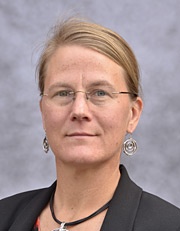- >>
- Lifespan Studies
- HCP Aging / Aging Adult Brain Connectome (AABC)
- Study Homepage
Study Overview
Changes in brain structure and function are a normal part of the aging process from middle age through older adulthood. In the last decade, an explosion of work has focused on brain structure in disorders that occur as we age. Yet, relatively few studies have focused on healthy aging of brain circuitry and how it varies across people.
Thanks to recent technological advances pioneered by the Human Connectome Project study of healthy young adults, we can now explore how the brain typically ages and how connections change in mature and older adults. Data collected will be shared broadly so that researchers can learn as much as possible from it for years to come. Characterizing brain aging in healthy adults will also allow us to better understand differences in people with conditions that may affect brain wiring such as dementia or major depression.
Ultimately, the HCP-A Study aims to collect information that we, our families, and health professionals can use to enhance our well being as we age.
How To Participate
The Lifespan Human Connectome Project Aging (HCP-A) Study will enroll 1,500+ healthy adults ages 36-100+ to discover how individual experiences affect the ways in which different parts of the brain are connected and how these connections (the “connectome”) change across healthy adulthood. To learn how to participate, go to our Recruitment Page.
Principal Investigators
Current Data Releases
AABC Release 1 Released on 10/27/2025
AABC Release 1 includes cross-sectional (V1) and longitudinal (V2, V3) 3T MR scans and non-imaging data from 1248 healthy older adults (ages 36-90+) in the HCP-Aging (HCA) and Aging Adult Brain Connectome (AABC) projects.
It includes multi-modal preprocessed and unprocessed imaging data (structural, high-res hippocampal T2 [unprocessed only], resting state fMRI, task fMRI, diffusion, and ASL) on 1248 participants in 2214 imaging visits (many subjects have data for more than one visit, 36+ TB of data). It includes non-imaging data collected over a broad range of domains for 1248 V1, 762 V2, and 236 V3 (2246 total) in-person visits and in remote follow up surveys (non-imaging events). Session breakdowns by study and visit/event are available here.
What’s new in AABC Release 1?
- New ConnectomeDB powered by BALSA data sharing platform (see ConnectomeDB tab) that displays and allows filtering of non-imaging Core Variables for creating subject groups
- Preprocessed and unprocessed multimodal MRI data [structural MRI, resting state fMRI, task fMRI, diffusion MRI, and arterial spin labeling (ASL) MRI]
- Most users should access Preprocessed Recommended data that have been cleaned of spatially and temporally specific structured noise and precisely aligned across subjects by multimodal cortical surface registration (MSMAll)
- 3T Multi-modal Imaging Derived Phenotypes (IDPs) for released participant sessions available in CSV (zip archives in IDPs tab) and Connectome Workbench-compatible CIFTI imaging package formats
- Harmonized non-imaging behavioral and biomeasure data available for participant visits and follow up events across HCA and AABC to facilitate cross-sectional and longitudinal analyses across all participants
- Core Variables, high interest primary variables and summary scores, can be viewed and filtered in the BALSA UI (use Column Selector to add, Export CSV to download)
- Completeness variables indicate the per subject availability of data types to be used to create subject groups
- 7 T Magnetic Resonance Spectroscopy (MRS) brain metabolite data are available for 138 participants
- Extra long (XL) set of non-imaging data (including item-level and follow up events/variables) along with NIH-Toolbox raw and score outputs are available as spreadsheets
- Core Variables, high interest primary variables and summary scores, can be viewed and filtered in the BALSA UI (use Column Selector to add, Export CSV to download)
Get Access and Download the data: Get started by Registering for BALSA and agreeing to the AABC Data Use Terms. An academic, non-profit, or government email address is required for agreement to the AABC Data Use Terms and accessing the data.
To download imaging data, you must 1) install Aspera Connect (scroll down to “IBM Aspera client-deployed software” to find Aspera Connect download links) and 2) an Aspera Connect plugin for your browser (available from Firefox, Chrome, Safari, etc.).
Set Preferences>Transfers in Aspera Connect to a directory with sufficient space for large downloads.
To download the full non-imaging data, click the Files tab and Download under AABC_Release1_Non-imaging_Data-XL.csv. Use the Column Selector and Export CSV to view, filter on, and download all or subsets of Core Variables for selected subjects.
Want more information? Check out our updated documentation to help with understanding the file structure and interpreting the data.
View Data Release Documentation
Release Date: Oct 27, 2025
HCP-Aging Lifespan 2.0 Release Released on 02/26/2021
Lifespan HCP Release 2.0 includes cross-sectional visit 1 (V1) preprocessed structural and functional imaging data, unprocessed V1 imaging data for all included modalities (structural, high-res hippocampal T2, resting state fMRI, task fMRI, diffusion, and ASL), and non-imaging demographic and behavioral assessment data from 725 HCP-Aging (HCP-A, ages 36-100+) healthy participants (22+ TB of data).
What’s new in the Lifespan 2.0 release?
- Preprocessed rfMRI and tfMRI data available for ALL release subjects
- Processed sMRI and fMRI data in modality- and processing output-specific "HCP package" datasets
- HCP packages cater to different analysis purposes can be used as filters on the Lifespan 2.0 NDA Query page to create custom download packages
- Most users should access Preprocessed Recommended data that have been cleaned of spatially specific structured noise and precisely aligned across subjects by multimodal cortical surface registration (MSMAll)
- HCP packages cater to different analysis purposes can be used as filters on the Lifespan 2.0 NDA Query page to create custom download packages
- Behavioral and biomeasure data available for all released subjects, including NIH Toolbox measures for most subjects.
Get Access and Download the data: Get started with the Data Access and Download Instructions for navigating NDA and using it's download tools. We've also created a wiki that details setup for downloading data via NDA's command line tools.
Want more information? Check out our updated documentation to help with understanding the file structure and interpreting the data.
View Data Release Documentation
Release Date: Feb 26, 2021









